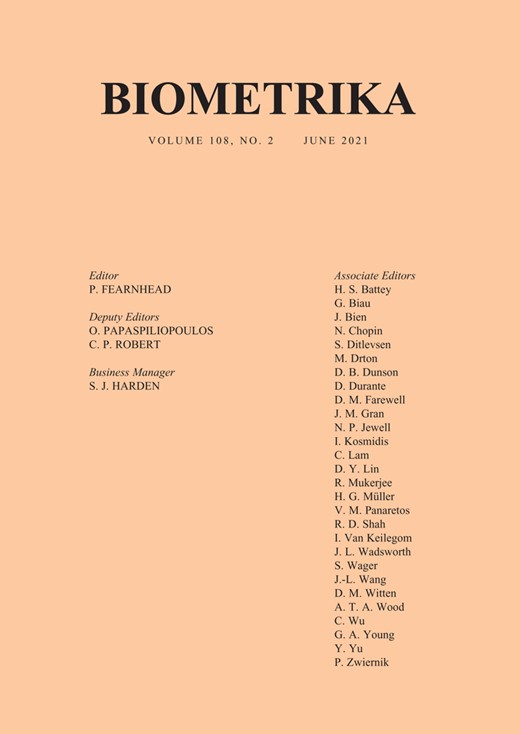-
Views
-
Cite
Cite
D C Ahfock, W J Astle, S Richardson, Statistical properties of sketching algorithms, Biometrika, Volume 108, Issue 2, June 2021, Pages 283–297, https://doi.org/10.1093/biomet/asaa062
Close - Share Icon Share
Summary
Sketching is a probabilistic data compression technique that has been largely developed by the computer science community. Numerical operations on big datasets can be intolerably slow; sketching algorithms address this issue by generating a smaller surrogate dataset. Typically, inference proceeds on the compressed dataset. Sketching algorithms generally use random projections to compress the original dataset, and this stochastic generation process makes them amenable to statistical analysis. We argue that the sketched data can be modelled as a random sample, thus placing this family of data compression methods firmly within an inferential framework. In particular, we focus on the Gaussian, Hadamard and Clarkson–Woodruff sketches and their use in single-pass sketching algorithms for linear regression with huge samples. We explore the statistical properties of sketched regression algorithms and derive new distributional results for a large class of sketching estimators. A key result is a conditional central limit theorem for data-oblivious sketches. An important finding is that the best choice of sketching algorithm in terms of mean squared error is related to the signal-to-noise ratio in the source dataset. Finally, we demonstrate the theory and the limits of its applicability on two datasets.



